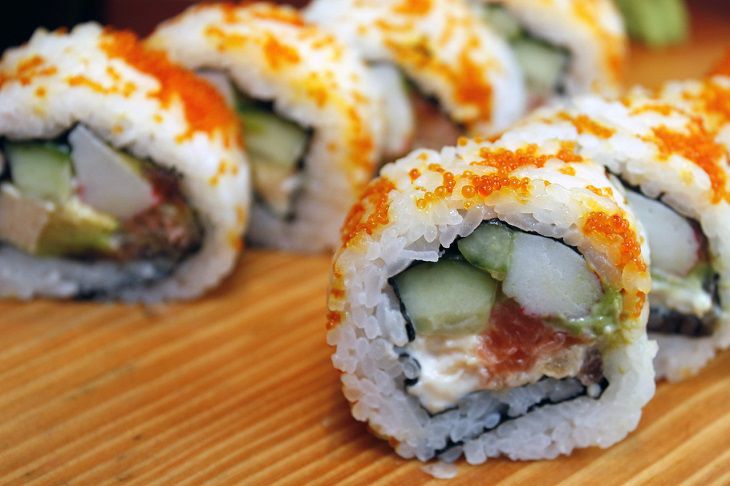While you can always order sushi, you can also try cooking them at home - it's not that hard, and it can also be quite fun!
Meanwhile, it's not just about collecting the necessary ingredients - you should also know some tricks, or you can make lots of mistakes.
Here are some popular mistakes people make when cooking sushi rolls at home.
Rice Overload
One common mistake is using too much rice in the sushi roll.
It's important to spread a thin layer of rice on the nori (seaweed) sheet, leaving some space at the edges.

Using too much rice can make the roll bulky and difficult to eat.
Incorrect Rice Texture
Another mistake is not getting the rice texture right. Sushi rice should be sticky but not overly mushy.
It's important to rinse the rice properly before cooking and then cook it with the right amount of water.
After cooking, let the rice cool slightly before using it for sushi rolls.
Uneven Rice Distribution
Unevenly spreading the rice on the nori sheet is a common mistake.
Make sure to spread the rice evenly, leaving a small gap at the top to seal the roll.
Overstuffing the Roll
Trying to put too many ingredients in a sushi roll can lead to overstuffing.
This makes it difficult to roll tightly and may cause the roll to fall apart when slicing.
Choose a few key ingredients and distribute them evenly to keep the roll manageable.
Incorrect Rolling Technique
Rolling the sushi too loosely or too tightly can affect its appearance and texture. Aim for a firm, but not overly tight, roll.
Use a bamboo sushi mat or plastic wrap to help roll the ingredients tightly, applying gentle pressure as you go.
Cutting with a Dull Knife
Using a dull knife to cut sushi rolls can result in messy, uneven slices. Make sure to use a sharp knife and wet it slightly before cutting.
This helps in achieving clean, precise cuts without crushing the roll.









